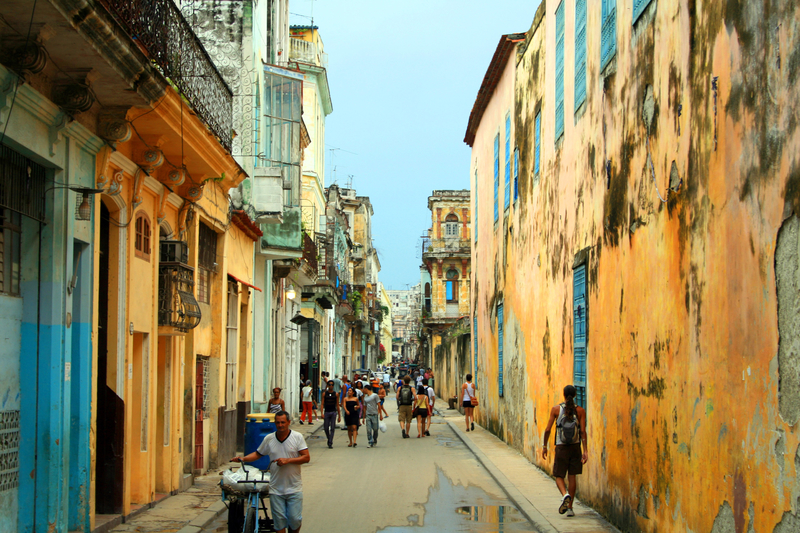In Cuba, what do a Coco Taxi driver, an AirBnB host, and a waitress have in common? They could all have previously worked as physicians. In the country’s current economic landscape, where depleted material resources and a mixed economic system have left doctors with little financial incentive to continue their professions, many have abandoned their posts to pursue better incomes by working in the tourism industry. Unless the Cuban government takes action, the dearth of doctors will continue to deepen. If the government wishes to maintain the ideals of the Cuban Revolution—eradicating poverty and instituting racial, class, and gender equality—it must raise wages for doctors.
In 1953, Fidel Castro and physician Ernesto “Che” Guevara led a six-year insurrection against Cuba’s corrupt, US-backed military regime. The revolution instilled an ideology that is now considered to be the longest standing socialist experiment in modern history. Castro’s vision produced one of the best health care systems in the world. With an infant mortality rate of 6 out of 1,000 births and an average life expectancy of 78 years, Cuba’s universal health care system rivals those of high-income countries and ensures modern medicine is accessible for all, not just the most well-off. Its commitment to preventative medicine and primary care is unprecedented. For example, Cuba became the first country in the world to achieve the goal of zero transmission of mother-to-child HIV infection. The liberties compromised to attain these outcomes may be called into question, but no one can contest the efficacy of the system’s programs.
Cuba’s healthcare vision hinges upon its physicians. The archetypal Cuban doctor does more than perform checkups: They advocate for clean water, supervise pesticide spraying, and carry out home visits. During the Revolution, physicians were envisioned as the Revolution’s “army of white coats” fighting for social change—and many still live up to this title. Currently, Cuba has the most doctors per capita of any country in the world. But recent economic changes have prompted many of these doctors to move away from the profession.
Following the Revolution, Cuba’s economy was entirely state-run, with heavy subsidization from the Soviet Union to compensate for the crippling US embargo. But after the Soviet Bloc fell in 1991, the pressure from the US embargo and the increasing demand for globalized practices forced monumental reforms. To keep the island afloat, the government was forced to make provisions for private businesses and self-employment. The biggest shift was in the introduction of the Cuban convertible peso, or the “tourist dollar.” With the national peso still in play, the government effectively installed a two-tiered economy, which led to a rise in income inequality. This change left doctors, who formerly occupied a prestigious status, in a position of relative economic disadvantage.
Currently, doctors make around $67 per month, while nurses make a mere $40. Waiters, cab drivers, and tour guides can easily earn 10 to 20 times this amount thanks to tips from tourists. But wages aren’t the only thing driving doctors out of the field: The Cuban medical system is strained to its limit. Cuba capitalizes on “medical diplomacy,” in which thousands of Cuban doctors work abroad to increase diplomatic ties and receive material resources in return. Cuba sends thousands of Cuban doctors to Venezuela in return for their oil, making Cuban doctors the island’s most treasured form of capital. In fact, over 25,000 of the country’s 90,000 doctors currently work abroad. In addition, Cuba has a booming health tourism sector, offering innovative therapies such as Cimavax, a vaccine for lung cancer. Overseas work and health tourism earn the country billions of dollars each year. Patients claim that the absence of so many doctors and the disproportionate allocation of medical supplies has led to a reduction in the quality of care. Furthermore, the system suffers from a serious lack of material resources: Patients are often expected to bring their own supplies, and doctors are forced to work with minimal or dated medical devices. Abysmal pay and a sobering lack of resources render the often stressful, preparation-heavy medical profession less than enticing.
The advent of private tourism in Cuba has brought more jobs and a higher standard of living—but at what cost? As luxury hotels and fashion houses buy spots in Old Havana, the two-tiered economy solidifies, leaving many Cubans behind. Cuba now faces the gargantuan task of defining the modern meaning of its Revolution. A clear-cut solution is hard to find, but one thing is evident: Cuba must face the consequences of capitalist microcosms within its state-run economy or risk harming the original revolucionarios, doctors and nurses. If the Cuban government wants to uphold the legacy of the Revolution, it must raise wages for its doctors. By closing the income gap between physicians and other private sector jobs, Cuba would rededicate its commitment to its doctors and maintain the practice of “revolutionary medicine.”
Photo: “Street in Havana, Cuba“
